Redefining Aquaculture Safety with Artificial Intelligence: Design Innovations, Trends, and Future Perspectives
Abstract
:1. Introduction
2. Research Gap
3. Research Methods
4. Results
4.1. Academic Publication Output and Trends
4.2. National Analysis
4.3. High-Contribution Institutions
4.4. Impact Analysis of Journals
4.5. Author and Co-Cited Author Analysis
4.6. Joint Citation Analysis of Reference Literature
4.7. Keyword Analysis
4.8. Overall Research Process
5. Discussion
5.1. Analysis of Current Challenges
- (1)
- From the analysis of keywords, it is evident that various aspects of artificial intelligence (AI), including deep learning and machine learning, are increasingly being applied to the monitoring and management of aquaculture safety. However, how can machine learning effectively enhance aquaculture safety, and what are the current bottlenecks?
- (2)
- Aquaculture safety primarily encompasses concerns related to water quality, farming practices, and subsequent processing and production safety. How can artificial intelligence (AI) drive progress and effectively ensure these safety measures? What are the current challenges and bottlenecks in this process?
- (3)
- From the keyword clustering analysis, it is evident that the detection of fish behavior has emerged as a key focus in the application of artificial intelligence for aquaculture safety. Therefore, how can this challenge be effectively addressed?
5.2. Analysis of Future Research
- (1)
- In the future, aquaculture safety management will transcend traditional biological breeding methods. An AI-driven adaptive gene health analysis system, leveraging deep learning and evolutionary computing, will emerge as a core technology for precision breeding. This system integrates high-throughput gene sequencing (NGS) with deep neural networks (DNN) to analyze gene expression patterns in individual fish and populations, predicting their adaptability under various environmental stresses such as water temperature fluctuations, pathogen infections, and dissolved oxygen variations. By optimizing CRISPR-Cas9 or RNA editing strategies through reinforcement learning, AI can autonomously recommend optimal gene modification plans to enhance disease resistance, adaptability, and growth rates while minimizing ecological risks. This technology not only accelerates the development of fish species resilient to environmental stresses but also leverages digital twin technology to construct genetic simulations of aquaculture populations, thereby optimizing long-term ecological stability.
- (2)
- Aquaculture disease monitoring is transitioning from traditional laboratory analysis to AI-driven, efficient, and real-time detection. The AI-quantum pathogen detection system, which integrates quantum computing and reinforcement learning, will significantly enhance the timeliness and accuracy of pathogen detection in water bodies. This system leverages quantum computing to accelerate gene sequence alignment and employs AI-trained high-dimensional feature analysis models to identify dynamic changes in microbial populations, thereby accurately predicting pathogen outbreak trends. Additionally, the system incorporates nanobiosensors and surface plasmon resonance (SPR) technology to achieve non-invasive, ultra-sensitive pathogen detection in water quality, ensuring the safety of the aquaculture environment. Through this integrated AI-quantum pathogen detection platform, aquaculture managers can receive precise early warnings before disease outbreaks and adjust management strategies in real time to mitigate the risk of disease transmission.
- (3)
- In the future, large models will play a pivotal role in the safety management of aquaculture, driving the industry towards intelligence, precision, and eco-friendliness. Based on multimodal foundation models (MFM), AI will integrate water quality parameters, meteorological data, fish behavior, and pathogen gene sequences to construct a high-precision environmental perception and dynamic prediction system, enabling real-time optimization and intelligent regulation of water quality. Additionally, the integration of large-scale reinforcement learning (LSRL) with knowledge graphs (KG) will empower autonomous decision-making systems, allowing AI to achieve end-to-end intelligent aquaculture management capabilities. This includes optimizing feed input, stocking density, disease prevention and control, as well as market supply chain forecasting. Furthermore, leveraging federated learning (FL), large models can share optimization strategies across regions, enhancing the overall intelligence level of the industry while ensuring data privacy.
5.3. Case Analysis with Implications for the Future
5.3.1. Modeling of Comprehensive Power Load of Fishery Energy Internet Considering Fishery Meteorology [88]
5.3.2. An Environment Control System for Fish Farming Based on Internet of Things [89]
5.3.3. Comparative Analysis
5.4. Limitations Analysis
6. Conclusions
6.1. Article Summary
6.2. Analysis of Innovative Features
Author Contributions
Funding
Institutional Review Board Statement
Informed Consent Statement
Data Availability Statement
Conflicts of Interest
References
- Rakkannan, G.; Agarwal, D. Role of Aquaculture Biotechnology in Food Security and Nutrition. In Food Security, Nutrition and Sustainability Through Aquaculture Technologies; Springer Nature: Cham, Switzerland, 2025; pp. 173–191. [Google Scholar]
- Nius, I.; Shah, M.D.; Khodzori, F.A.; Shapawi, R.; Mazlan, N.; Chong, W.S. Unraveling Sustainable Aquaculture through Pillars of Practices. In Essentials of Aquaculture Practices; Springer Nature: Singapore, 2024; pp. 281–299. [Google Scholar]
- Yang, H.; Tan, T.; Du, X.; Feng, Q.; Liu, Y.; Tang, Y.; Zhang, Y. Advancements in Freshwater Aquaculture Wastewater Management: A Comprehensive Review. Aquaculture 2024, 741, 741346. [Google Scholar] [CrossRef]
- Boyd, C.E.; D’Abramo, L.R.; Glencross, B.D.; Huyben, D.C.; Juarez, L.M.; Lockwood, G.S.; Valenti, W.C. Achieving Sustainable Aquaculture: Historical and Current Perspectives and Future Needs and Challenges. J. World Aquac. Soc. 2020, 51, 578–633. [Google Scholar] [CrossRef]
- Li, X.; Li, J.; Wang, Y.; Fu, L.; Fu, Y.; Li, B.; Jiao, B. Aquaculture Industry in China: Current State, Challenges, and Outlook. Rev. Fish. Sci. 2011, 19, 187–200. [Google Scholar] [CrossRef]
- Jennings, S.; Stentiford, G.D.; Leocadio, A.M.; Jeffery, K.R.; Metcalfe, J.D.; Katsiadaki, I.; Verner-Jeffreys, D.W. Aquatic Food Security: Insights into Challenges and Solutions from an Analysis of Interactions between Fisheries, Aquaculture, Food Safety, Human Health, Fish and Human Welfare, Economy, and Environment. Fish Fish. 2016, 17, 893–938. [Google Scholar] [CrossRef]
- Okocha, R.C.; Olatoye, I.O.; Adedeji, O.B. Food Safety Impacts of Antimicrobial Use and Their Residues in Aquaculture. Public Health Rev. 2018, 39, 21. [Google Scholar] [CrossRef] [PubMed]
- Dwivedi, Y.K.; Hughes, L.; Ismagilova, E.; Aarts, G.; Coombs, C.; Crick, T.; Williams, M.D. Artificial Intelligence (AI): Multidisciplinary Perspectives on Emerging Challenges, Opportunities, and Agenda for Research, Practice, and Policy. Int. J. Inf. Manag. 2021, 57, 101994. [Google Scholar] [CrossRef]
- Shaw, J.; Rudzicz, F.; Jamieson, T.; Goldfarb, A. Artificial Intelligence and the Implementation Challenge. J. Med. Internet Res. 2019, 21, e13659. [Google Scholar] [CrossRef] [PubMed]
- Linaza, M.T.; Posada, J.; Bund, J.; Eisert, P.; Quartulli, M.; Döllner, J.; Lucat, L. Data-Driven Artificial Intelligence Applications for Sustainable Precision Agriculture. Agronomy 2021, 11, 1227. [Google Scholar] [CrossRef]
- Liang, C.; Shah, T. IoT in Agriculture: The Future of Precision Monitoring and Data-Driven Farming. Eig. Rev. Sci. Technol. 2023, 7, 85–104. [Google Scholar]
- Akintuyi, O.B. Adaptive AI in precision agriculture: A review: Investigating the use of self-learning algorithms in optimizing farm operations based on real-time data. Res. J. Multidiscip. Stud. 2024, 7, 016–030. [Google Scholar]
- Neethirajan, S. Artificial Intelligence and Sensor Innovations: Enhancing Livestock Welfare with a Human-Centric Approach. Hum.-Centric Intell. Syst. 2024, 4, 77–92. [Google Scholar] [CrossRef]
- Senoo, E.E.K.; Anggraini, L.; Kumi, J.A.; Luna, B.K.; Akansah, E.; Sulyman, H.A.; Aritsugi, M. IoT Solutions with Artificial Intelligence Technologies for Precision Agriculture: Definitions, Applications, Challenges, and Opportunities. Electronics 2024, 13, 1894. [Google Scholar] [CrossRef]
- Chandak, T.; Jayashree, J.; Vijayashree, J. 14 Trends and Advancements of AI and XAI in Drug Discovery. In Explainable AI (XAI) for Sustainable Development: Trends and Applications; Chapman and Hall/CRC: New York, NY, USA, 2024; p. 233. [Google Scholar]
- Xiong, X. Multidisciplinary Professional Talent Cultivation in the Internationalization of China’s Agri-Sci-Tech Industry. Soc. Sci. Hum. Open 2024, 4972459. [Google Scholar] [CrossRef]
- Gott, J.; Morgenstern, R.; Turnšek, M. Aquaponics for the Anthropocene: Towards a ‘Sustainability First’ Agenda. In Aquaponics Food Production Systems: Combined Aquaculture and Hydroponic Production Technologies for the Future; Springer: Berlin/Heidelberg, Germany, 2019; pp. 393–432. [Google Scholar]
- Hariram, N.P.; Mekha, K.B.; Suganthan, V.; Sudhakar, K. Sustainalism: An Integrated Socio-Economic-Environmental Model to Address Sustainable Development and Sustainability. Sustainability 2023, 15, 10682. [Google Scholar] [CrossRef]
- Cao, J.; Chen, X.; Qiu, R.; Hou, S. Electric Vehicle Industry Sustainable Development with a Stakeholder Engagement System. Technol. Soc. 2021, 67, 101771. [Google Scholar] [CrossRef]
- Yin, S.; Liu, L.; Mahmood, T. New Trends in Sustainable Development for Industry 5.0: Digital Green Innovation Economy. Green Low-Carbon Econ. 2024, 2, 269–276. [Google Scholar] [CrossRef]
- Aung, T.; Abdul Razak, R.; Rahiman Bin Md Nor, A. Artificial Intelligence Methods Used in Various Aquaculture Applications: A Systematic Literature Review. J. World Aquac. Soc. 2025, 56, e13107. [Google Scholar] [CrossRef]
- Aalstad, A.; Nilsen, J.W. Alternative Seafood—Exploring Pathways for Norway in the Protein Transition. Master’s Thesis, Norwegian University of Life Sciences, Ås, Norway, 2023. [Google Scholar]
- Pandey, P.C.; Pandey, M. Highlighting the Role of Agriculture and Geospatial Technology in Food Security and Sustainable Development Goals. Sustain. Dev. 2023, 31, 3175–3195. [Google Scholar] [CrossRef]
- Arora, A.; Belenzon, S.; Patacconi, A.; Suh, J. The Changing Structure of American Innovation: Some Cautionary Remarks for Economic Growth. Innov. Policy Econ. 2020, 20, 39–93. [Google Scholar] [CrossRef]
- Ayaz, M.; Ammad-Uddin, M.; Baig, I. Wireless Sensor’s Civil Applications, Prototypes, and Future Integration Possibilities: A Review. IEEE Sens. J. 2017, 18, 4–30. [Google Scholar] [CrossRef]
- Mahrad, B.E.; Newton, A.; Icely, J.D.; Kacimi, I.; Abalansa, S.; Snoussi, M. Contribution of Remote Sensing Technologies to a Holistic Coastal and Marine Environmental Management Framework: A Review. Remote Sens. 2020, 12, 2313. [Google Scholar] [CrossRef]
- Yadav, A.; Noori, M.T.; Biswas, A.; Min, B. A Concise Review on the Recent Developments in the Internet of Things (IoT)-Based Smart Aquaculture Practices. Rev. Fish. Sci. Aquac. 2023, 31, 103–118. [Google Scholar] [CrossRef]
- Mustafa, S.; Estim, A.; Shapawi, R.; Shalehand, M.J.; Sidik, S.R.M. Technological Applications and Adaptations in Aquaculture for Progress Towards Sustainable Development and Seafood Security. IOP Conf. Ser. Earth Environ. Sci. 2021, 718, 012041. [Google Scholar] [CrossRef]
- Misra, N.N.; Dixit, Y.; Al-Mallahi, A.; Bhullar, M.S.; Upadhyay, R.; Martynenko, A. IoT, Big Data, and Artificial Intelligence in Agriculture and Food Industry. IEEE Internet Things J. 2020, 9, 6305–6324. [Google Scholar] [CrossRef]
- Alam, M.; Khan, I.R.; Siddiqui, F.; Alam, M.A. Artificial Intelligence as Key Enabler for Safeguarding the Marine Resources. In Artificial Intelligence and Edge Computing for Sustainable Ocean Health; Springer Nature: Cham, Switzerland, 2024; pp. 409–451. [Google Scholar]
- Teng, Z.; Luo, Y.; Pearlstein, D.J.; Wheeler, R.M.; Johnson, C.M.; Wang, Q.; Fonseca, J.M. Microgreens for Home, Commercial, and Space Farming: A Comprehensive Update of the Most Recent Developments. Annu. Rev. Food Sci. Technol. 2023, 14, 539–562. [Google Scholar] [CrossRef]
- Neis, B.; Gao, W.; Cavalli, L.; Thorvaldsen, T.; Holmen, I.M.; Jeebhay, M.F.; Tapia-Jopia, C. Mass Mortality Events in Marine Salmon Aquaculture and Their Influence on Occupational Health and Safety Hazards and Risk of Injury. Aquaculture 2023, 566, 739225. [Google Scholar] [CrossRef]
- Sygna, L.; O’Brien, K.; Wolf, J. A Changing Environment for Human Security; Earthscan: London, UK, 2013. [Google Scholar]
- Zilm, K.W.; Bonhomme, C.; Corzilius, B.; Florian, P.; Long, J.; Martin, R.; Nielsen, U.G. Solid-State NMR Symposium. In Proceedings of the 61st Annual Rocky Mountain Conference on Magnetic Resonance, Copper Mountain, CO, USA, 25–29 July 2022; University of Illinois at Chicago: Chicago, IL, USA, 2022; p. 17. [Google Scholar]
- Wagner-Riddle, C.; Kaiser, B.; Raghuram, N.; Tubana, B.; Rahman, M.; Singh, B.; Wolfrum, S. Improving Nitrogen Use Efficiency in Crop Production; Burleigh Dodds Science Publishing: Cambridge, UK, 2024. [Google Scholar]
- Sun, Q.; Li, H.; Ma, Z.; Wang, C.; Campillo, J.; Zhang, Q.; Guo, J. A Comprehensive Review of Smart Energy Meters in Intelligent Energy Networks. IEEE Internet Things J. 2015, 3, 464–479. [Google Scholar] [CrossRef]
- Turner, S.J.; Shelton, D.L.; Razzaque, J.; McIntyre, O.; May, J.R. (Eds.) Environmental Rights: The Development of Standards; Cambridge University Press: Cambridge, UK, 2019. [Google Scholar]
- Grigoryeva, S.; Baklanov, A.; Alimkhanova, A.; Dmitriev, A.; Györök, G. Usage of Light-Emitting Diode Lighting and Visible Light Communication Technology for Temperature Control. Acta Polytech. Hung. 2021, 18, 7–24. [Google Scholar] [CrossRef]
- Roe, S.; Price, A.; Rees, M.; Tout-Lyon, J. Baiting and Citizen Science: A Comparative Study of BRUVs and eDNA Surveys Throughout Estuaries in New South Wales. In Proceedings of the 11th Indo-Pacific Fish Conference and Annual Conference of the Australian Society for Fish Biology, Auckland, New Zealand, 20–24 November 2023. [Google Scholar]
- Agbeti, W.E.; Black, S.; Komen, J.; Lankheet, M.J.M.; Magnoni, L.; Palstra, A.P. Swimming at Increasing Speeds in Steady and Unsteady Flows of Atlantic Salmon Salmo salar: Behaviour, Oxygen Consumption, and Overall Dynamic Body Acceleration. In Proceedings of the Conference Handbook: 11th Indo-Pacific Fish Conference (IPFC) and Annual Conference of the Australian Society for Fish Biology, Auckland, New Zealand, 20–24 November 2023. [Google Scholar]
- Testor, P.; De Young, B.; Rudnick, D.L.; Glenn, S.; Hayes, D.; Lee, C.M.; Wilson, D. OceanGliders: A Component of the Integrated GOOS. Front. Mar. Sci. 2019, 6, 422. [Google Scholar] [CrossRef]
- Matsuzawa, Y.; Fukuda, S.; Ohira, M.; De Baets, B. Modelling Fish Co-Occurrence Patterns in a Small Spring-Fed River Using a Machine Learning Approach. Ecol. Indic. 2023, 151, 110234. [Google Scholar] [CrossRef]
- Ramírez-Coronel, F.J.; Rodríguez-Elías, O.M.; Esquer-Miranda, E.; Pérez-Patricio, M.; Pérez-Báez, A.J.; Hinojosa-Palafox, E.A. Non-Invasive Fish Biometrics for Enhancing Precision and Understanding of Aquaculture Farming through Statistical Morphology Analysis and Machine Learning. Animals 2024, 14, 1850. [Google Scholar] [CrossRef] [PubMed]
- Yamato, C.; Ichikawa, K.; Arai, N.; Tanaka, K.; Nishiyama, T.; Kittiwattanawong, K. Deep Neural Networks-Based Automated Extraction of Dugong Feeding Trails from UAV Images in the Intertidal Seagrass Beds. PLoS ONE 2021, 16, e0255586. [Google Scholar] [CrossRef] [PubMed]
- Mandal, A.; Ghosh, A.R. Role of Artificial Intelligence (AI) in Fish Growth and Health Status Monitoring: A Review on Sustainable Aquaculture. Aquac. Int. 2024, 32, 2791–2820. [Google Scholar] [CrossRef]
- Ali, E.; Jamlos, M.F.; Raypah, M.E.; Tan, M.I.S.M.H.; Bakhit, A.A.; Nordin, M.A.H.; Nugroho, A. A Comprehensive Review of Sensor-Based and Spectroscopy-Based Systems for Monitoring Water Quality in Freshwater Aquaculture System. J. Adv. Res. Appl. Sci. Eng. Technol. 2024, 56, 248–265. [Google Scholar]
- Føre, M.; Frank, K.; Norton, T.; Svendsen, E.; Alfredsen, J.A.; Dempster, T.; Berckmans, D. Precision Fish Farming: A New Framework to Improve Production in Aquaculture. Biosyst. Eng. 2018, 173, 176–193. [Google Scholar] [CrossRef]
- Kumar, G.; Engle, C.R. Technological Advances That Led to Growth of Shrimp, Salmon, and Tilapia Farming. Rev. Fish. Sci. Aquac. 2016, 24, 136–152. [Google Scholar] [CrossRef]
- Pathak, H.; Mishra, J.P.; Mohapatra, T. Indian Agriculture After Independence; Indian Council of Agricultural Research: New Delhi, India, 2022; Volume 110, p. 426. [Google Scholar]
- Mapiye, O.; Makombe, G.; Molotsi, A.; Dzama, K.; Mapiye, C. Towards a Revolutionized Agricultural Extension System for the Sustainability of Smallholder Livestock Production in Developing Countries: The Potential Role of ICTs. Sustainability 2021, 13, 5868. [Google Scholar] [CrossRef]
- Tariq, F.; Khandaker, M.R.; Wong, K.K.; Imran, M.A.; Bennis, M.; Debbah, M. A Speculative Study on 6G. IEEE Wirel. Commun. 2020, 27, 118–125. [Google Scholar] [CrossRef]
- Thabo, M.; Zanele, N.; Sipho, D. Next-Generation Artificial Intelligence: Anticipated Advancements and Challenges in the Coming Years. Am. J. Sci. Integr. Hum. Dev. 2024, 2, 78–88. [Google Scholar]
- He, J.; Baxter, S.L.; Xu, J.; Xu, J.; Zhou, X.; Zhang, K. The Practical Implementation of Artificial Intelligence Technologies in Medicine. Nat. Med. 2019, 25, 30–36. [Google Scholar] [CrossRef] [PubMed]
- Subasinghe, R.; Soto, D.; Jia, J. Global Aquaculture and Its Role in Sustainable Development. Rev. Aquac. 2009, 1, 2–9. [Google Scholar] [CrossRef]
- Focardi, S.; Corsi, I.; Franchi, E. Safety Issues and Sustainable Development of European Aquaculture: New Tools for Environmentally Sound Aquaculture. Aquac. Int. 2005, 13, 3–17. [Google Scholar] [CrossRef]
- Dang, Q.; Luo, Z.; Ouyang, C.; Wang, L. First Systematic Review on Health Communication Using the CiteSpace Software in China: Exploring Its Research Hotspots and Frontiers. Int. J. Environ. Res. Public Health 2021, 18, 13008. [Google Scholar] [CrossRef] [PubMed]
- Yuan, X.; Lai, Y. Bibliometric and Visualized Analysis of Elite Controllers Based on CiteSpace: Landscapes, Hotspots, and Frontiers. Front. Cell. Infect. Microbiol. 2023, 13, 1147265. [Google Scholar] [CrossRef] [PubMed]
- Liu, C.; Yuan, Y.; Zhou, A.; Guo, L.; Zhang, H.; Liu, X. Development Trends and Research Frontiers of Preferential Flow in Soil Based on CiteSpace. Water 2022, 14, 3036. [Google Scholar] [CrossRef]
- McLevey, J.; McIlroy-Young, R. Introducing Metaknowledge: Software for Computational Research in Information Science, Network Analysis, and Science of Science. J. Informetr. 2017, 11, 176–197. [Google Scholar] [CrossRef]
- Xue, W.; Li, H.; Ali, R.; Rehman, R.U. Knowledge Mapping of Corporate Financial Performance Research: A Visual Analysis Using CiteSpace and UCINET. Sustainability 2020, 12, 3554. [Google Scholar] [CrossRef]
- Ju, F. Mapping the Knowledge Structure of Image Recognition in Cultural Heritage: A Scientometric Analysis Using CiteSpace, VOSviewer, and Bibliometrix. J. Imaging 2024, 10, 272. [Google Scholar] [CrossRef]
- Guo, Q.; Li, W.; Xie, R.; Wang, Y.; Xie, Y.; Cheng, K.; Sun, Z. Visualization of the Relationship between Macrophage and Wound Healing from the Perspective of Bibliometric Analysis. Int. Wound J. 2024, 21, e14597. [Google Scholar] [CrossRef] [PubMed]
- Sadeghpour, M.; Beyazıt, E. Exploring the Landscape of Autonomous Vehicles Research: A Scientometric Analysis in the Context of Urban Transportation Planning. J. Scientometr. Res. 2024, 13, 25–42. [Google Scholar] [CrossRef]
- Gölgeci, I.; Ali, I.; Ritala, P.; Arslan, A. A Bibliometric Review of Service Ecosystems Research: Current Status and Future Directions. J. Bus. Ind. Mark. 2022, 37, 841–858. [Google Scholar] [CrossRef]
- Powell, W.W.; White, D.R.; Koput, K.W.; Owen-Smith, J. Network Dynamics and Field Evolution: The Growth of Interorganizational Collaboration in the Life Sciences. Am. J. Sociol. 2005, 110, 1132–1205. [Google Scholar] [CrossRef]
- Cui, B.; Fei, D.; Shao, G.; Lu, Y.; Chu, J. Extracting Raft Aquaculture Areas from Remote Sensing Images via an Improved U-Net with a PSE Structure. Remote Sens. 2019, 11, 2053. [Google Scholar] [CrossRef]
- Li, D.; Wang, Z.; Wu, S.; Miao, Z.; Du, L.; Duan, Y. Automatic Recognition Methods of Fish Feeding Behavior in Aquaculture: A Review. Aquaculture 2020, 528, 735508. [Google Scholar] [CrossRef]
- Ahmed, M.S.; Aurpa, T.T.; Azad, M.A.K. Fish Disease Detection Using Image-Based Machine Learning Technique in Aquaculture. J. King Saud Univ.-Comput. Inf. Sci. 2022, 34, 5170–5182. [Google Scholar] [CrossRef]
- Duan, Y.; Li, X.; Zhang, L.; Chen, D.; Ji, H. Mapping National-Scale Aquaculture Ponds Based on the Google Earth Engine in the Chinese Coastal Zone. Aquaculture 2020, 520, 734666. [Google Scholar] [CrossRef]
- Liu, Y.; Wang, Z.; Yang, X.; Zhang, Y.; Yang, F.; Liu, B.; Cai, P. Satellite-Based Monitoring and Statistics for Raft and Cage Aquaculture in China’s Offshore Waters. Int. J. Appl. Earth Obs. Geoinf. 2020, 91, 102118. [Google Scholar] [CrossRef]
- Saberioon, M.; Gholizadeh, A.; Cisar, P.; Pautsina, A.; Urban, J. Application of Machine Vision Systems in Aquaculture with Emphasis on Fish: State-of-the-Art and Key Issues. Rev. Aquac. 2017, 9, 369–387. [Google Scholar] [CrossRef]
- Lu, Y.; Shao, W.; Sun, J. Extraction of Offshore Aquaculture Areas from Medium-Resolution Remote Sensing Images Based on Deep Learning. Remote Sens. 2021, 13, 3854. [Google Scholar] [CrossRef]
- Zhao, S.; Zhang, S.; Liu, J.; Wang, H.; Zhu, J.; Li, D.; Zhao, R. Application of Machine Learning in Intelligent Fish Aquaculture: A Review. Aquaculture 2021, 540, 736724. [Google Scholar] [CrossRef]
- Fu, Y.; Deng, J.; Wang, H.; Comber, A.; Yang, W.; Wu, W.; Wang, K. A New Satellite-Derived Dataset for Marine Aquaculture Areas in China’s Coastal Region. Earth Syst. Sci. Data 2021, 13, 1829–1842. [Google Scholar] [CrossRef]
- Cheng, B.; Liang, C.; Liu, X.; Liu, Y.; Ma, X.; Wang, G. Research on a Novel Extraction Method Using Deep Learning Based on GF-2 Images for Aquaculture Areas. Int. J. Remote Sens. 2020, 41, 3575–3591. [Google Scholar] [CrossRef]
- Adams, A. Progress, Challenges and Opportunities in Fish Vaccine Development. Fish Shellfish Immunol. 2019, 90, 210–214. [Google Scholar] [CrossRef] [PubMed]
- Hou, T.; Sun, W.; Chen, C.; Yang, G.; Meng, X.; Peng, J. Marine Floating Raft Aquaculture Extraction of Hyperspectral Remote Sensing Images Based on Decision Tree Algorithm. Int. J. Appl. Earth Obs. Geoinf. 2022, 111, 102846. [Google Scholar] [CrossRef]
- Deng, J.; Bai, Y.; Chen, Z.; Shen, T.; Li, C.; Yang, X. A Convolutional Neural Network for Coastal Aquaculture Extraction from High-Resolution Remote Sensing Imagery. Sustainability 2023, 15, 5332. [Google Scholar] [CrossRef]
- Cui, B.; Zhao, Y.; Yang, M.; Huang, L.; Lu, Y. Reverse Attention Dual-Stream Network for Extracting Laver Aquaculture Areas from GF-1 Remote Sensing Images. IEEE J. Sel. Top. Appl. Earth Obs. Remote Sens. 2023, 16, 5271–5283. [Google Scholar] [CrossRef]
- Su, H.; Huang, P.; Yin, J.; Zhang, X. Faster and Better Instance Segmentation for Large Scene Remote Sensing Imagery. In Proceedings of the IGARSS 2022—2022 IEEE International Geoscience and Remote Sensing Symposium, Kuala Lumpur, Malaysia, 17–22 July 2022; pp. 2187–2190. [Google Scholar]
- Ren, C.; Wang, Z.; Zhang, Y.; Zhang, B.; Chen, L.; Xi, Y.; Song, K. Rapid Expansion of Coastal Aquaculture Ponds in China from Landsat Observations during 1984–2016. Int. J. Appl. Earth Obs. Geoinf. 2019, 82, 101902. [Google Scholar] [CrossRef]
- Kang, J.; Sui, L.; Yang, X.; Liu, Y.; Wang, Z.; Wang, J.; Ma, Y. Sea Surface-Visible Aquaculture Spatial-Temporal Distribution Remote Sensing: A Case Study in Liaoning Province, China from 2000 to 2018. Sustainability 2019, 11, 7186. [Google Scholar] [CrossRef]
- Bochkovskiy, A.; Wang, C.Y.; Liao, H.Y.M. YOLOv4: Optimal Speed and Accuracy of Object Detection. arXiv 2020, arXiv:2004.10934. [Google Scholar]
- Chen, L.; Papandreou, G.; Kokkinos, I.; Murphy, K.; Yuille, A.L. DeepLab: Semantic Image Segmentation with Deep Convolutional Nets, Atrous Convolution, and Fully Connected CRFs. IEEE Trans. Pattern Anal. Mach. Intell. 2018, 40, 834–848. [Google Scholar] [CrossRef] [PubMed]
- Liu, J.; Lu, Y.; Guo, X.; Ke, W. A Deep Learning Method for Offshore Raft Aquaculture Extraction Based on Medium Resolution Remote Sensing Images. IEEE J. Sel. Top. Appl. Earth Obs. Remote Sens. 2023, 16, 6296–6309. [Google Scholar] [CrossRef]
- Haq, K.R.A.; Harigovindan, V.P. Water Quality Prediction for Smart Aquaculture Using Hybrid Deep Learning Models. IEEE Access 2022, 10, 60078–60098. [Google Scholar]
- Yang, X.; Zhang, S.; Liu, J.; Gao, Q.; Dong, S.; Zhou, C. Deep Learning for Smart Fish Farming: Applications, Opportunities and Challenges. Rev. Aquac. 2021, 13, 66–90. [Google Scholar] [CrossRef]
- Fu, X.; Gou, T. Modeling of Comprehensive Power Load of Fishery Energy Internet Considering Fishery Meteorology. Inf. Process. Agric. 2023, 10, 581–591. [Google Scholar] [CrossRef]
- Dhinakaran, D.; Gopalakrishnan, S.; Manigandan, M.D.; Anish, T.P. IoT-Based Environmental Control System for Fish Farms with Sensor Integration and Machine Learning Decision Support. arXiv 2023, arXiv:2311.04258. [Google Scholar] [CrossRef]

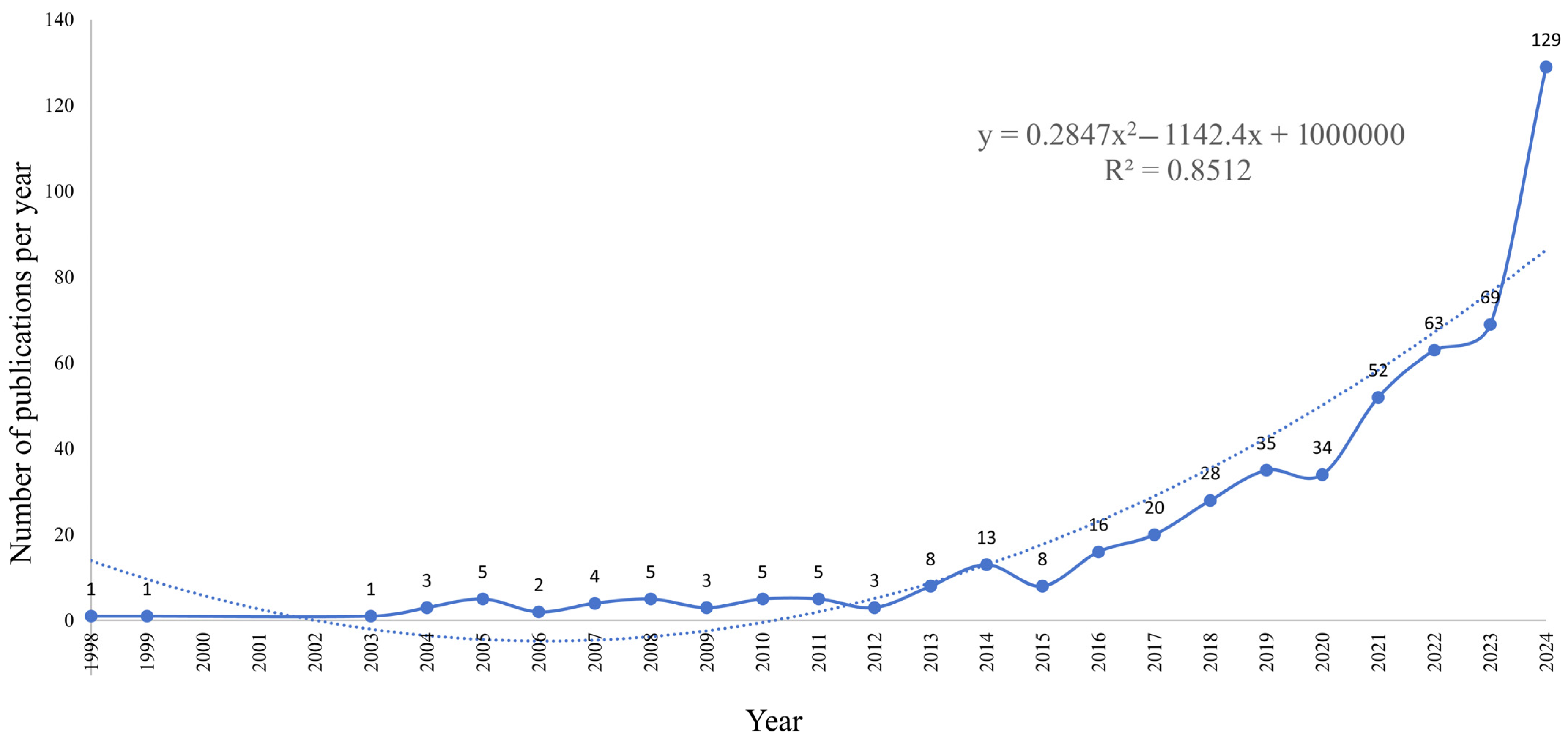

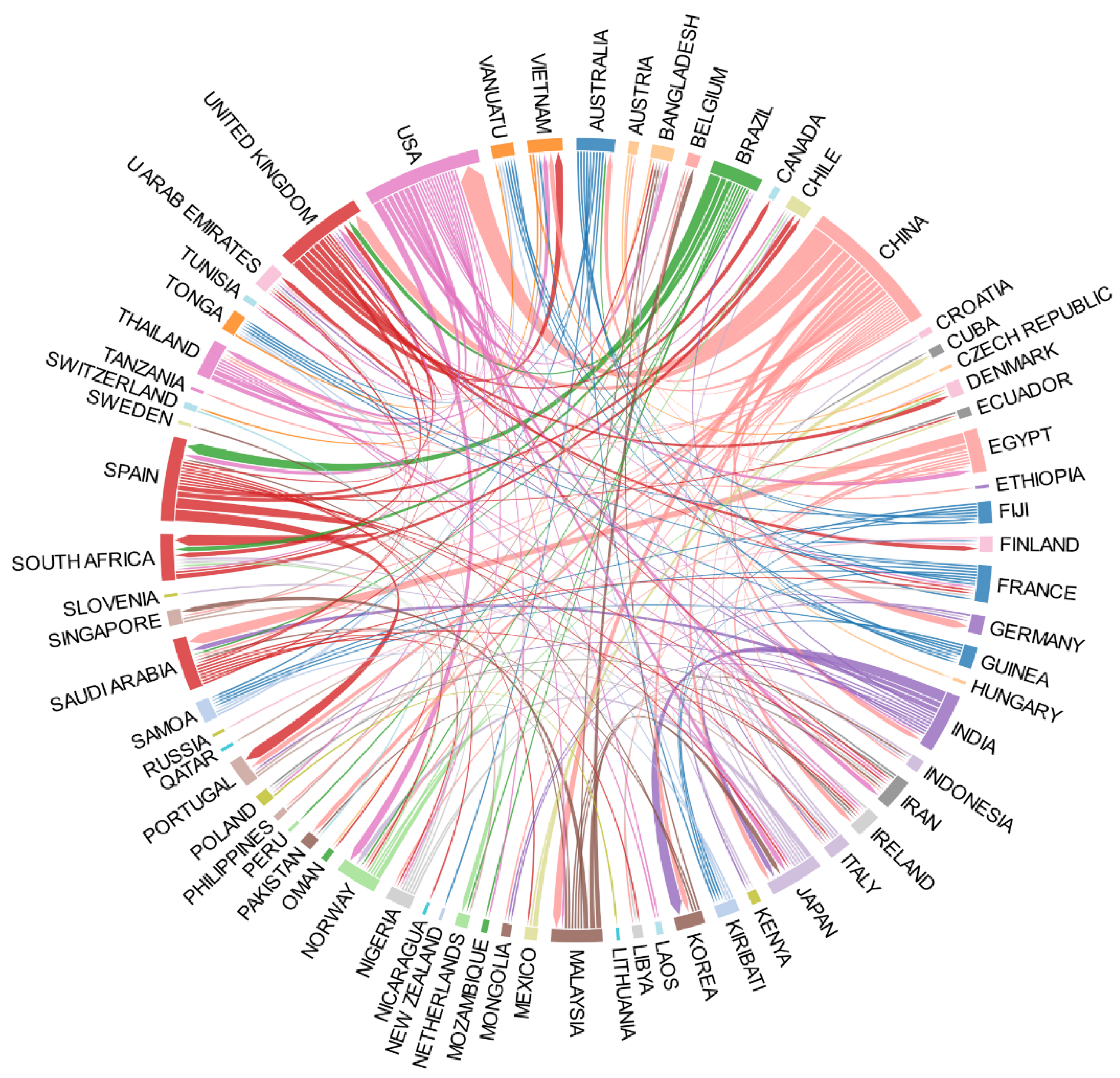
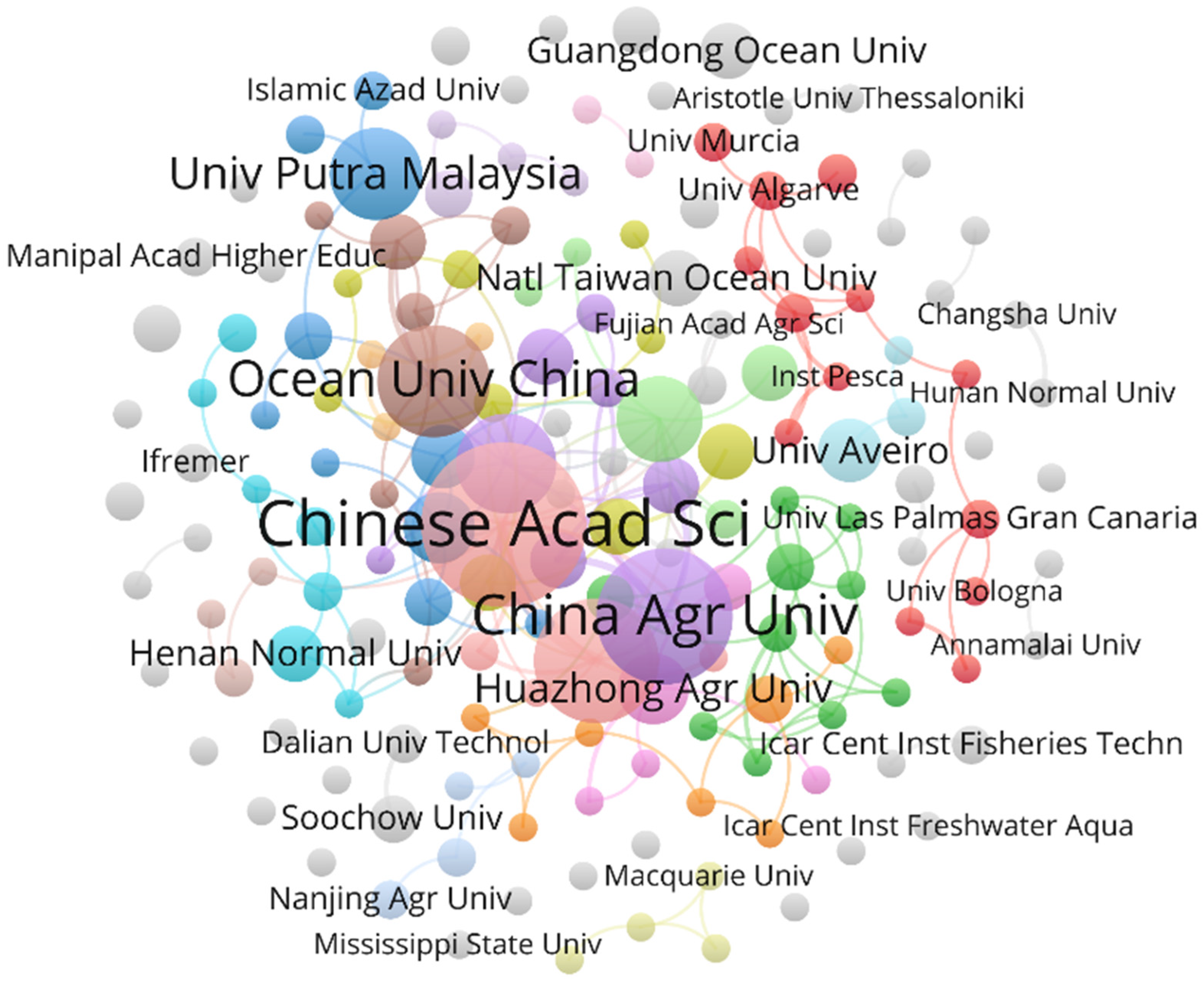

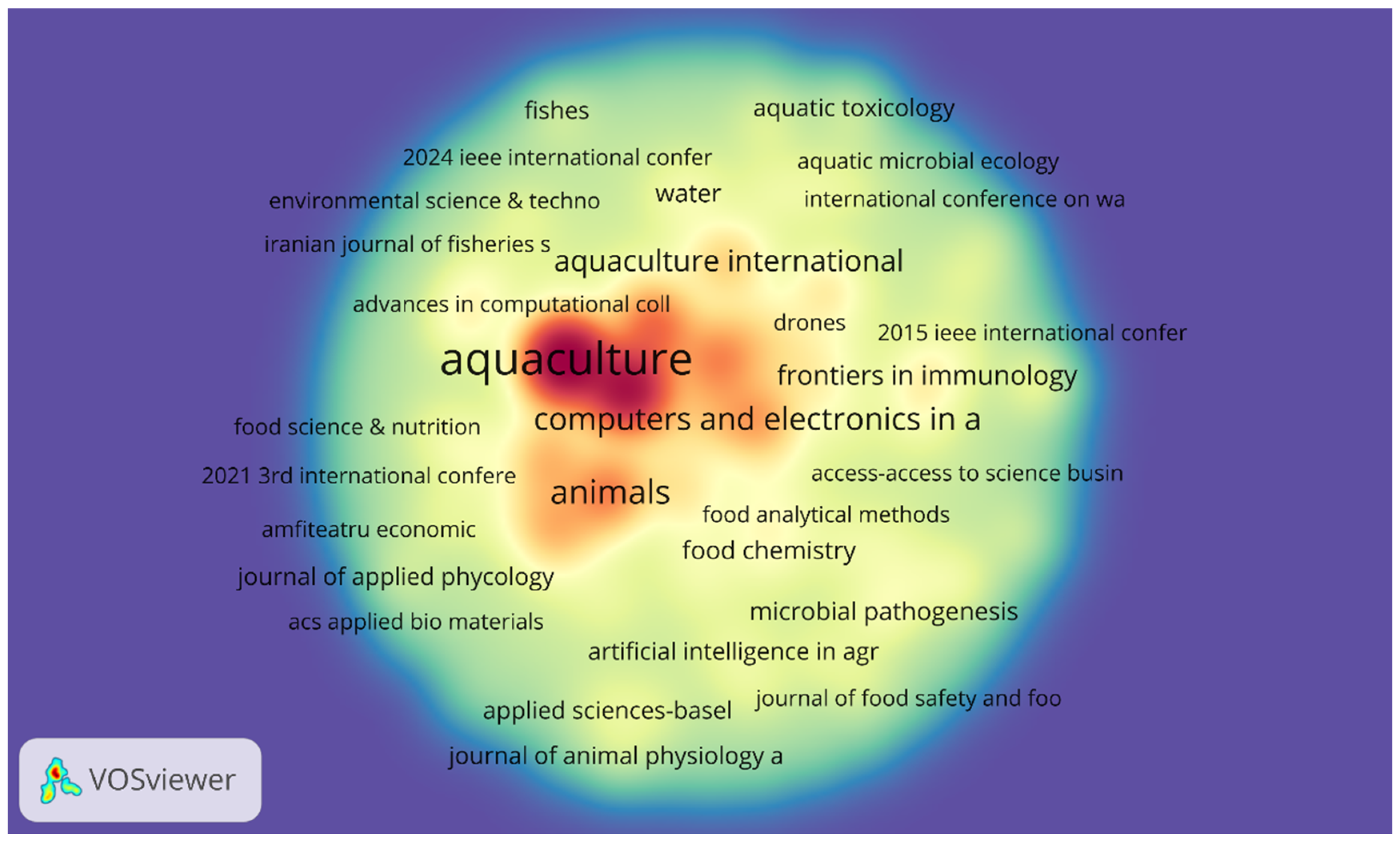
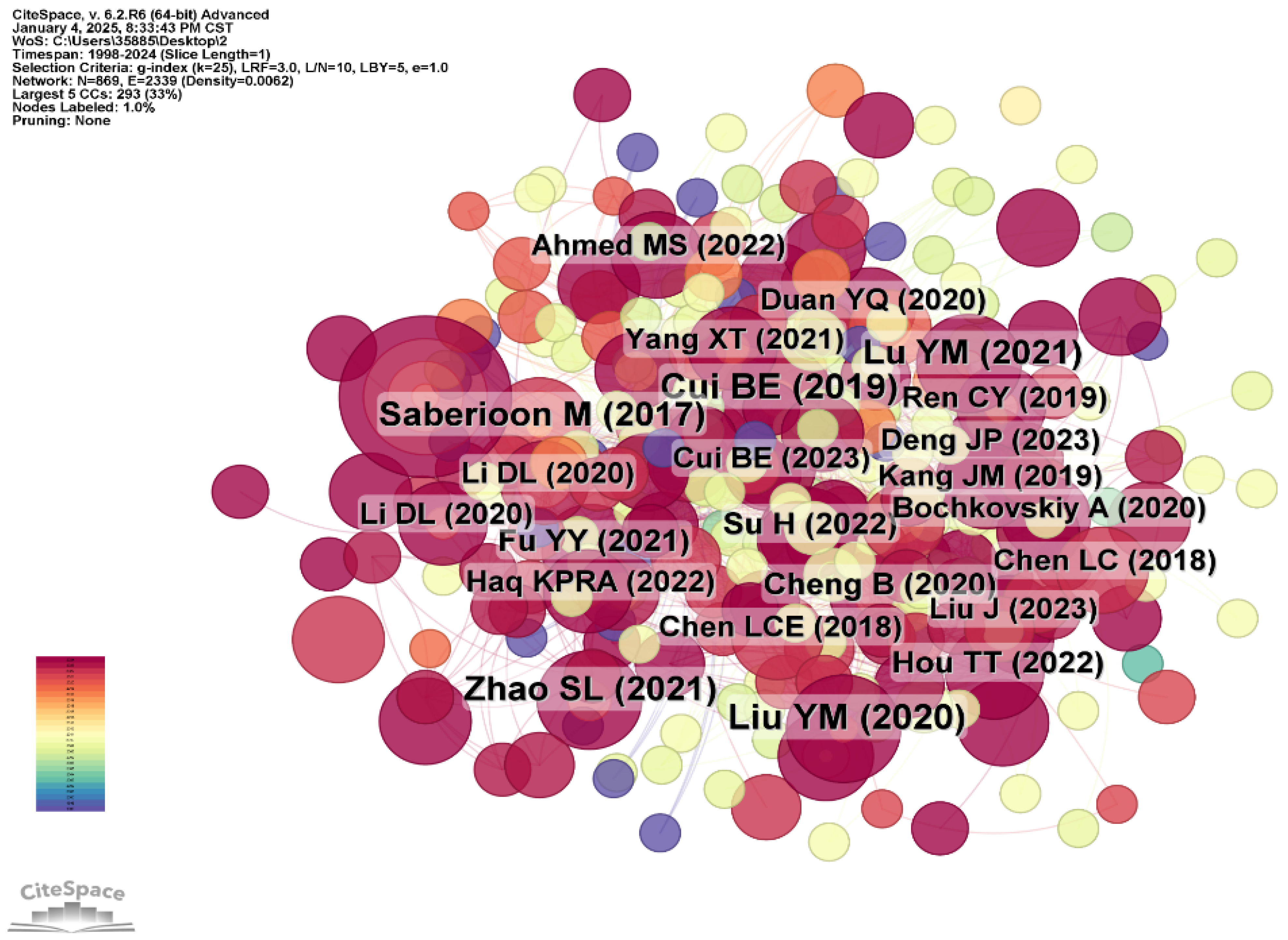





| Types | Technical Features | Significance |
|---|---|---|
| Intelligent Water Quality Monitoring and Early Warning | Multi-Source Sensor Data Fusion, Water Quality Control Strategies | Reducing Outbreak Diseases, Ensuring Health of Aquatic Organisms |
| Aquaculture Disease Identification and Diagnosis | High-Resolution Image Acquisition, Early Diagnosis, and Online Monitoring | Reducing Medication Costs and Drug Residues, Reducing Mortality and Losses for Farmers |
| Smart Feeding and Feed Optimization | Behavior Pattern Analysis, Data-Driven Decision Making | Reducing Water Pollution, Reducing Feed-Associated Costs for Farmers and Improving Animal Welfare |
| Automated Management of Aquaculture Farms | Cloud Platform and Big Data Analytics, Multi-System Integration | Comprehensive Risk Management |
| Underwater Robots and Drone Inspections | Defect Detection and Anomaly Identification | Reducing Human Risks, Reducing Labor Costs and Improving Detection Efficiency |
| Behavior Patterns and Health Assessment Algorithms | Fish Tracking and Individual Identification | Improving Fish Welfare, Data-Driven Optimization |
| TS | Search Terms |
|---|---|
| Artificial intelligence | (“artificial intelligence” OR “AI” OR “machine intelligence” OR “intelligent systems” OR “computational intelligence” OR “smart systems” OR “intelligent computing” OR “autonomous intelligence” OR “intelligent automation” OR “automated reasoning” OR “intelligent algorithms” OR “AI-driven solutions” OR “machine learning” OR “ML” OR “deep learning” OR “neural networks” OR “cognitive computing” OR “AI technologies” OR “robotic intelligence” OR “intelligent decision-making systems” OR “AI-powered analytics” OR “natural language processing” OR “NLP” OR “computer vision” OR “intelligent agents”) |
| Aquaculture | (“aquaculture” OR “fish farming” OR “aquatic farming” OR “mariculture” OR “aquatic cultivation” OR “seafood farming” OR “marine aquaculture” OR “inland aquaculture” OR “freshwater aquaculture” OR “brackish water aquaculture”) |
| Safety | (“safety” OR “security” OR “protection” OR “reliability” OR “stability” OR “safeguard” OR “defense” OR “assurance” OR “well-being” OR “risk prevention” OR “hazard control” OR “accident prevention” OR “safe condition” OR “safety measures” OR “precaution” OR “safe environment”) |
| Count | Country | Documents | Total Link Strength | Citations | Citation Per Publication |
|---|---|---|---|---|---|
| 1 | China | 216 | 37 | 2895 | 13 |
| 2 | USA | 47 | 30 | 744 | 16 |
| 3 | Spain | 30 | 22 | 721 | 24 |
| 4 | Japan | 14 | 14 | 489 | 35 |
| 5 | Malaysia | 21 | 11 | 375 | 18 |
| 6 | Egypt | 15 | 10 | 367 | 24 |
| 7 | The United Kingdom | 18 | 22 | 347 | 19 |
| 8 | Portugal | 14 | 8 | 284 | 20 |
| 9 | Australia | 10 | 5 | 275 | 28 |
| 10 | South Korea | 19 | 8 | 223 | 12 |
| Sequence | Organization | Documents | Citations | Citation Per Publication |
|---|---|---|---|---|
| 1 | Chinese Acad Sci | 22 | 231 | 11 |
| 2 | China Agr Univ | 17 | 404 | 24 |
| 3 | Chinese Acad Fishery Sci | 11 | 136 | 12 |
| 4 | Huazhong Agr Univ | 7 | 38 | 5 |
| 5 | Beijing Engn & Technol Res Ctr Internet Things Ag | 5 | 100 | 20 |
| 6 | Dalian Ocean Univ | 5 | 36 | 7 |
| 7 | Guangdong Ocean Univ | 5 | 20 | 4 |
| 8 | Henan Normal Univ | 5 | 97 | 19 |
| 9 | Jiangsu Univ | 5 | 109 | 22 |
| 10 | Jimei Univ | 5 | 67 | 13 |
| Rank | Source | Documents | Citations | IF | Quartile in Category |
|---|---|---|---|---|---|
| 1 | Aquaculture | 45 | 1068 | 3.9 | Q1 |
| 2 | Fish & Shellfish Immunology | 34 | 777 | 4.0 | Q1 |
| 3 | Aquaculture Research | 14 | 273 | 1.9 | Q2 |
| 4 | Animals | 13 | 67 | 2.7 | Q1 |
| 5 | Remote Sensing | 11 | 136 | 4.2 | Q2 |
| 6 | Computers and Electronics in Agriculture | 10 | 395 | 7.7 | Q1 |
| 7 | Aquaculture Reports | 8 | 24 | 3.2 | Q1 |
| 8 | Journal of Fish Diseases | 8 | 62 | 2.2 | Q1 |
| 9 | Aquaculture International | 7 | 43 | 2.2 | Q1 |
| 10 | Aquacultural Engineering | 5 | 163 | 3.6 | Q1 |
| Count | Author | Documents | Citations | Total Link Strength |
|---|---|---|---|---|
| 1 | Wei, Yaoguang | 9 | 246 | 14 |
| 2 | An, Dong | 7 | 151 | 13 |
| 3 | Pan, Luqing | 6 | 112 | 11 |
| 4 | Karim, Murni | 5 | 85 | 1 |
| 5 | Li, Daoliang | 4 | 166 | 1 |
| 6 | Li, Yun | 4 | 40 | 4 |
| 7 | Pai, Radhika m. | 4 | 9 | 6 |
| 8 | Almeida, Adelaide | 3 | 171 | 5 |
| 9 | Calado, Ricardo | 3 | 134 | 4 |
| 10 | Gao, Yan | 3 | 56 | 2 |
| Rank | Co-Citation Count | Year | Authors and Articles |
|---|---|---|---|
| 1 | 18 | 2022 | FAO, 2022, THE STATE OF WORLD FISHERIES AND AQUACULTURE 2022. TOWARDS BLUE TRANSFORMATION, V0, PP266, DOI 10.4060/CA9229EN |
| 2 | 8 | 2019 | Cui BE, 2019, REMOTE SENS-BASEL, V11, P0, DOI 10.3390/rs11172053 [66] |
| 3 | 8 | 2020 | Liu YM, 2020, INT J APPL EARTH OBS, V91, P0, DOI 10.1016/j.jag.2020.102118 [70] |
| 4 | 7 | 2017 | Saberioon M, 2017, REV AQUACULT, V9, P369, DOI 10.1111/raq.12143 [71] |
| 5 | 7 | 2021 | Lu YM, 2021, REMOTE SENS-BASEL, V13, P0, DOI 10.3390/rs13193854 [72] |
| 6 | 7 | 2021 | Zhao SL, 2021, AQUACULTURE, V540, P0, DOI 10.1016/j.aquaculture.2021.736724 [73] |
| 7 | 6 | 2021 | Fu YY, 2021, EARTH SYST SCI DATA, V13, P1829, DOI 10.5194/essd-13-1829-2021 [74] |
| 8 | 6 | 2020 | Cheng B, 2020, INT J REMOTE SENS, V41, P3575, DOI 10.1080/01431161.2019.1706009 [75] |
| 9 | 6 | 2019 | Adams A, 2019, FISH SHELLFISH IMMUN, V90, P210, DOI 10.1016/j.fsi.2019.04.066 [76] |
| 10 | 6 | 2022 | Hou TT, 2022, INT J APPL EARTH OBS, V111, P0, DOI 10.1016/j.jag.2022.102846 [77] |
Disclaimer/Publisher’s Note: The statements, opinions and data contained in all publications are solely those of the individual author(s) and contributor(s) and not of MDPI and/or the editor(s). MDPI and/or the editor(s) disclaim responsibility for any injury to people or property resulting from any ideas, methods, instructions or products referred to in the content. |
© 2025 by the authors. Licensee MDPI, Basel, Switzerland. This article is an open access article distributed under the terms and conditions of the Creative Commons Attribution (CC BY) license (https://creativecommons.org/licenses/by/4.0/).
Share and Cite
Ma, F.; Fan, Z.; Nikolaeva, A.; Bao, H. Redefining Aquaculture Safety with Artificial Intelligence: Design Innovations, Trends, and Future Perspectives. Fishes 2025, 10, 88. https://doi.org/10.3390/fishes10030088
Ma F, Fan Z, Nikolaeva A, Bao H. Redefining Aquaculture Safety with Artificial Intelligence: Design Innovations, Trends, and Future Perspectives. Fishes. 2025; 10(3):88. https://doi.org/10.3390/fishes10030088
Chicago/Turabian StyleMa, Feng, Zewen Fan, Anna Nikolaeva, and Haoran Bao. 2025. "Redefining Aquaculture Safety with Artificial Intelligence: Design Innovations, Trends, and Future Perspectives" Fishes 10, no. 3: 88. https://doi.org/10.3390/fishes10030088
APA StyleMa, F., Fan, Z., Nikolaeva, A., & Bao, H. (2025). Redefining Aquaculture Safety with Artificial Intelligence: Design Innovations, Trends, and Future Perspectives. Fishes, 10(3), 88. https://doi.org/10.3390/fishes10030088








